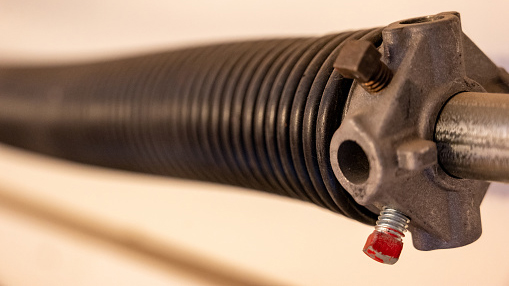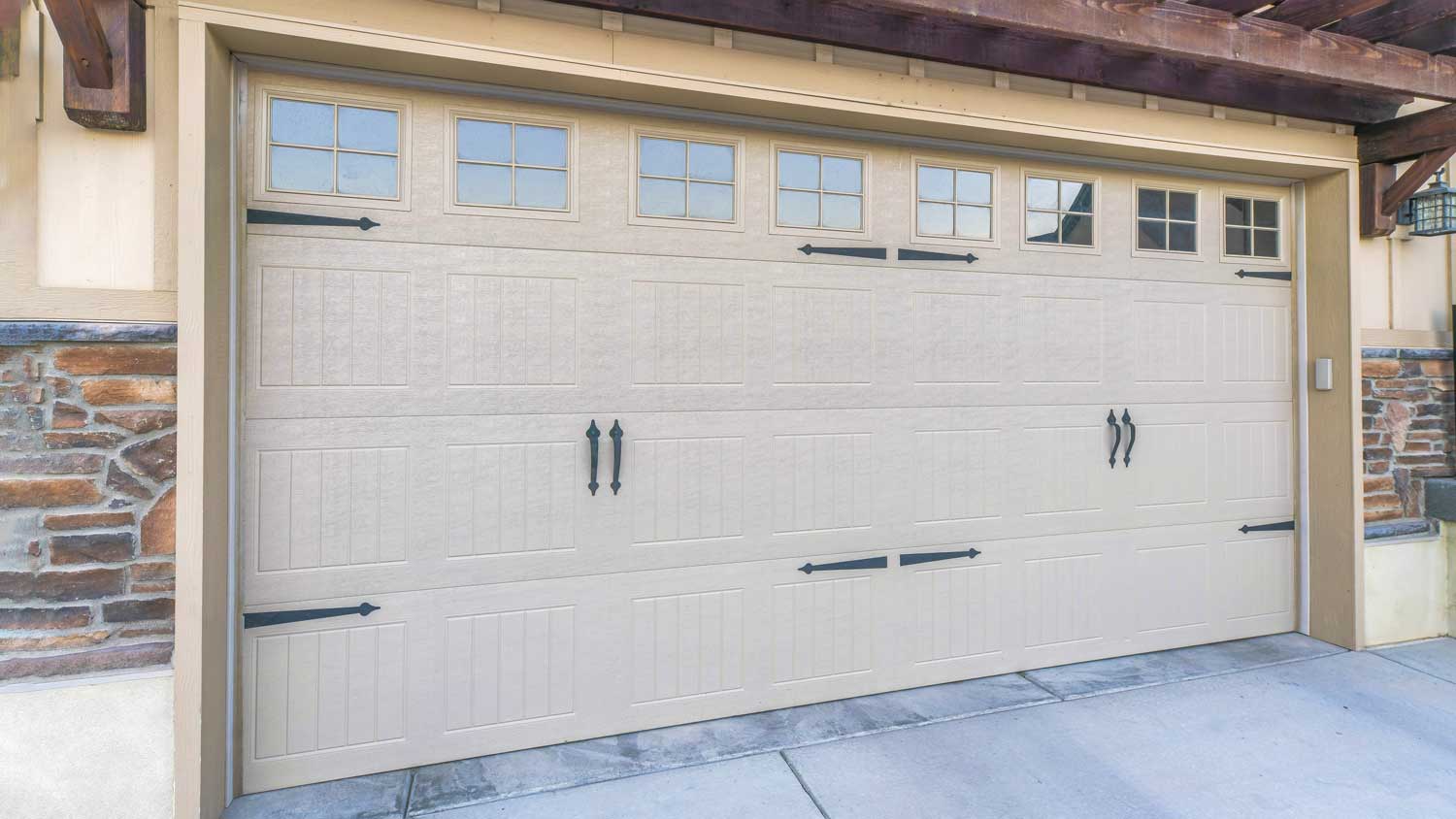How to Manage a Broken Garage Door Spring
Don’t spring into action just yet


Never attempt to replace a garage door spring yourself.
Most garage door springs break from normal use.
The average lifespan of a garage door spring is 7 to 15 years.
Regularly lubricating your garage door spring can't extend its life span.
Work with a professional garage installer to replace garage springs, as they're dangerous.
We seldom think of the importance of a garage door spring—until it breaks. But when it does break, knowing exactly what to do to safely manage and replace a garage door spring could be a matter of personal safety. To keep yourself and your family safe, here's what you need to do when you have a broken garage door spring.
When dealing with heavy garage doors, it's crucial to regularly check and maintain the lifting mechanisms for safe and smooth operation.
Importance of the Garage Door Spring
The spring on your garage door is responsible for helping the door open and close. As the spring tenses up, the door closes—when the spring loosens tension, the door opens. This balancing mechanism allows your garage door to open and close despite its heavy weight.
How Long Do Garage Door Springs Last?
Garage door springs can last anywhere from seven to 15 years on average, or roughly 5,000 to 20,000 cycles where your door opens and closes. Just how long your garage door springs last depends on:
The type of garage door spring you have installed in your garage
The weight of your garage door
How often you use and maintain your garage door
Whether your garage door and garage door opener are in alignment
Extension springs have the shortest lifespan, while torsion springs have the longest. Some high-cycle torsion springs can last up to 20 years, but these are less common and come with a higher price tag.
Reasons Your Garage Door Spring Broke

The spring to your garage door can break for a number of reasons. Identifying the cause of your broken garage door spring can help ensure that installing a new garage door spring won't result in the same fate. With this in mind, here are the most common reasons for a garage door spring to break:
It’s reached its life span through normal wear and tear.
Moisture got on the spring and caused it to rust.
Your torsion spring was not lubricated enough.
The garage door was too heavy for the spring or garage door opener.
Your garage door was out of alignment and put needless strain on the spring.
Methods to Prevent Your Garage Door Spring from Breaking in the Future
Oftentimes, preventing your garage door spring from breaking in the future starts with knowing why your garage door spring broke in the first place. Remember why your spring broke, then follow these tips to ensure it doesn't happen again.
Use a drip-free white lithium grease one to four times a year to lubricate your garage door spring.
Avoid applying WD-40 to your garage door spring, as this will not lubricate your garage door as efficiently as lithium grease.
Inspect your garage door and its components once or twice a year for signs of trouble.
Stick to a regular garage door tune-up plan.
Have a professional complete a garage door spring adjustment as needed.
Know your garage door spring’s limits, and replace the spring after you've exceeded its cycle maximum.
How to Open Your Garage Door After the Spring Broke
You should not attempt to open your garage door after the spring breaks. Doing so can cause serious injuries or even death. What you should do after the spring breaks in your garage door is:
Leave the garage door closed.
Avoid trying to manually lift the door.
Disengage the garage door opener.
Carefully lower the door with a helping hand if the spring broke while the garage was open or partially open.
Then, contact a garage door pro for help.
Should You Replace the Garage Door Spring Yourself?
While fixing or replacing a broken spring on a garage door may seem like a simple task, garage doors are heavy without the assistance of the spring mechanism. Not to mention, garage door springs are very taut and can be extremely dangerous to repair if you don’t have the expertise to do so safely.
If you need access to your garage, then you should call a local garage door repair professional to replace the garage door spring.





- How to Adjust a Garage Door Spring: Bounce Back Before It Breaks
- Garage Door Installation Tips Every Homeowner Should Know
- 5 Warning Signs You Have a Broken Garage Door
- Should I Repair or Replace a Garage Door Spring?
- Why Your Garage Door Won’t Stay Closed and What to Do About It
- What Are All the Parts of a Garage Door?
- 10 Garage Door Maintenance Tips for Maximum Longevity
- 11 Essential Tips for Buying a Garage Door
- Who Do You Hire to Fix or Install a Garage Door?
- Convert Garage Door to Entry Door










